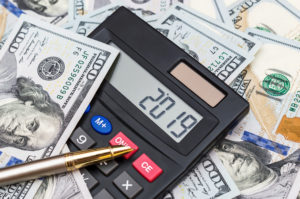
May 2, 2019— With its pricing practices under a congressional microscope, the pharmaceutical industry’s top trade group spent nearly $10 million on lobbying expenditures in the first three months of this year. That figure is on top of additional millions spent by some of the individual companies that have received the most attention recently in the drug pricing debate.
The Pharmaceutical Research and Manufacturers of America (PhRMA), which represents nearly 40 drug makers, stated in its first quarterly lobbying report of 2019 that it spent $9.91 million on lobbying activities. That amount is up sharply from the roughly $6 million in PhRMA lobbying expenditures from the final quarter of 2018.
Individual drug companies also have been doling out significant amounts of cash since the beginning of the year. Pfizer spent $4.2 million on its own lobbying efforts in the first three months of 2019, for instance, while Genentech burned through about $3 million over that time period. AstraZeneca, Bristol-Myers Squibb, Johnson & Johnson, and Eli Lilly were among the list of drug makers who each spent more than $1 million on first-quarter lobbying activities.
What’s behind these ramped-up efforts to influence the conversation in Washington? In recent months, lawmakers and the Trump administration have been paying particularly acute attention to the large and growing problem of high drug prices. Members of Congress from both parties have indicated that they plan to hold members of the drug industry to account for the prices they set and call on them to offer real solutions.
Significant public attention accompanied a Feb. 26 Senate Finance Committee hearing where lawmakers questioned the executives of seven of the biggest U.S. drug makers – AbbVie, AstraZeneca, Bristol-Myers Squibb, Johnson & Johnson, Merck, Pfizer, and Sanofi. Lawmakers from both parties asked tough questions about recent spikes in the prices of medications that are vital for patients living with diabetes, arthritis, and other conditions. Additional hearings on drug pricing also were held by several House and Senate committees, during which numerous members of Congress made it clear they did not want the industry to continue deflecting from its responsibility for high and increasing drug prices.
President Trump and Health & Human Services Secretary Alex Azar have made no secret of their desires to lower drug costs through a variety of regulatory approaches. During an April 30 meeting at the White House, the President and Democratic leaders from Congress agreed to try working together to bring down prices. While the conversation didn’t focus on any policy approach, the two sides agreed to meet again to go over possible solutions.
The typical drug maker playbook has focused on distracting from the root causes of high drug costs by pointing fingers elsewhere in the health care system – such as toward the 340B drug pricing program. Senate Finance Committee Chairman Chuck Grassley (R-Iowa) alluded to this tactic when he noted that “like most Americans, I’m sick and tired of the blame game. It’s time for solutions.”
As the drug pricing debate intensifies on Capitol Hill, lawmakers are becoming more vocal about the role that pharmaceutical companies play in setting prices. As these voices grow louder, it will become more difficult for the industry to try to exert its influence to change the subject.
